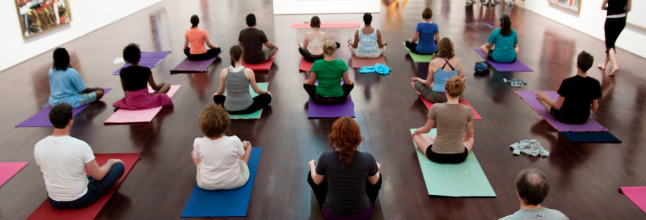Transparency is extremely important to us, so we are letting you know that we may receive a commission on some of links you click on from this page. See our disclaimer.
 Ryan Holmes is CEO of Hootsuite, which identifies itself as “the world’s most widely used social relationship platform.” He also deeply believes in employee health and well-being, which is why he recently wrote a piece in Medium with the provocative title: “Why It’s Time We Paid Employees to Exercise at Work.”
Ryan Holmes is CEO of Hootsuite, which identifies itself as “the world’s most widely used social relationship platform.” He also deeply believes in employee health and well-being, which is why he recently wrote a piece in Medium with the provocative title: “Why It’s Time We Paid Employees to Exercise at Work.”
As his subhead states: “Companies that sweat together, stay together.”
His argument goes something like this:Heart disease, cancer and chronic lower respiratory diseases are the top three killers according to the CDC. Further, many of these diseases (and others) are preventable — particularly through exercise. Since we spend such a significant portion of our time at work, that's a place where we ought to exercise.
Holmes writes: “In my office — we’re a tech company with around 700 employees focused on social media — exercise before, during and after working hours is encouraged. When we moved into a new headquarters several years ago, we installed a small gym and yoga room, as well as showers and changing rooms. Facilities are modest compared to those at some companies, but they’re well used. Yoga classes are packed before work, at lunch and after work. In the gym, volunteers from our company lead sweaty bootcamps and cross-training classes. Groups set out from our office for lunchtime runs and evening hikes. We have a hockey team and a road biking team and even a Quidditch team that does battle on broomsticks in the park.”
So does every company require a big gym?
Holmes says no: “Having the right workplace culture is far more important. Back in the day, in our cramped startup offices on the industrial side of town, we couldn’t afford a gym (in fact, we couldn’t even afford phones). But we did hang a fingerboard on the wall for pull-ups. We brought in yoga balls for chairs. We encouraged employees to bike to work, even though that meant cramming our office entryway full of bikes because it was too sketchy to park outside. And we made it clear that anyone could block off an hour for exercise during the day, provided it didn’t conflict with meetings and they made up the time (by having lunch at their desks, for instance).”
Holmes provides statistics to boost his argument:
- “A study presented to the American College of Sports Medicine, for instance, found that workers who spent 30–60 minutes at lunch exercising reported an average performance boost of 15 percent.”
- “Sixty percent of employees said their time management skills, mental performance and ability to meet deadlines improved on the days they exercised.”
- “Healthy, active employees take fewer sick days and bring more energy to the workplace. A 2011 study published in the Journal of Occupational & Environmental Medicine showed that incorporating just 2.5 hours of exercise per week into the workday led to a noticeable reduction in absences.”
Holmes concludes: “[Exercise in the office is] such a clear win-win — in terms of health, morale and productivity — that I think it deserves to be put in the spotlight once more. Considering how pervasive heart disease and other preventable illnesses are, it’s not an exaggeration to say that our future — as healthy individuals, healthy companies and healthy societies — may depend on it.”





0 Comments